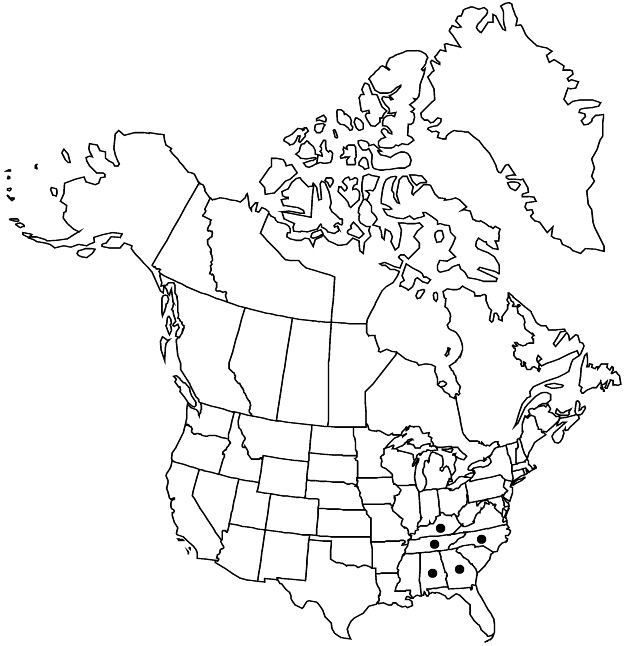Difference between revisions of "Euphorbia mercurialina"
Fl. Bor.-Amer. 2: 212. 1803.
FNA>Volume Importer |
imported>Volume Importer |
||
| (3 intermediate revisions by 2 users not shown) | |||
| Line 16: | Line 16: | ||
|name=Tithymalopsis mercurialina | |name=Tithymalopsis mercurialina | ||
|authority=(Michaux) Small | |authority=(Michaux) Small | ||
| + | |rank=species | ||
}} | }} | ||
|hierarchy=Euphorbiaceae;Euphorbia;Euphorbia sect. Alectoroctonum;Euphorbia mercurialina | |hierarchy=Euphorbiaceae;Euphorbia;Euphorbia sect. Alectoroctonum;Euphorbia mercurialina | ||
| Line 40: | Line 41: | ||
-->{{#Taxon: | -->{{#Taxon: | ||
name=Euphorbia mercurialina | name=Euphorbia mercurialina | ||
| − | |||
|authority=Michaux | |authority=Michaux | ||
|rank=species | |rank=species | ||
| Line 55: | Line 55: | ||
|publication year=1803 | |publication year=1803 | ||
|special status=Endemic | |special status=Endemic | ||
| − | |source xml=https:// | + | |source xml=https://bitbucket.org/aafc-mbb/fna-data-curation/src/2e0870ddd59836b60bcf96646a41e87ea5a5943a/coarse_grained_fna_xml/V12/V12_585.xml |
|genus=Euphorbia | |genus=Euphorbia | ||
|section=Euphorbia sect. Alectoroctonum | |section=Euphorbia sect. Alectoroctonum | ||
Latest revision as of 19:16, 5 November 2020
Herbs, perennial, with thickened, spreading rootstock. Stems erect, unbranched or branched, solitary or few, previous year's dead stems not persistent, 20–33 cm, glabrous or villous to lanate. Leaves alternate; stipules 0.1–0.2 mm; petiole (1–)2.5–5(–6) mm, ciliate to lanate; blade elliptic to ovate-deltate, proximal greatly reduced, scalelike, 34–55 × 20–26 mm, base rounded or cuneate, margins entire, densely ciliate, apex rounded to acute, abaxial surface sparsely pilose to villous (to lanate on midrib), adaxial surface glabrous; venation obscure, only midvein conspicuous. Cyathia usually in terminal pleiochasia, rarely dichasia; peduncle 1.3–2.7 mm (to 40–70 mm for central cyathium), filiform, glabrous. Involucre campanulate or hemispheric, 1.5–2.5 × 2–3 mm, glabrous; glands 5, green, elliptic-reniform, 0.5 × 2 mm; appendages white, narrowly transversely-oblong to lunate, 0.6 × 2.5 mm, slightly erose. Staminate flowers 10–15. Pistillate flowers: ovary glabrous; styles 0.7–1.5 mm, 2-fid at apex. Capsules depressed-globose, 2.3–3.3 × 4.4–5 mm, glabrous; columella 2.7–3 mm. Seeds tan to dark brown, ovoid, 2.2 × 1.6 mm, with shallow and coarse depressions; caruncle absent.
Phenology: Flowering and fruiting spring.
Habitat: Dry to mesic wooded slopes and ravines.
Elevation: 100–600 m.
Distribution

Ala., Ga., Ky., N.C., Tenn.
Discussion
Euphorbia mercurialina is restricted primarily to the Cumberland Plateau and southern Appalachians, with disjunct occurrences in south-central North Carolina in the lower Piedmont. The North Carolina plants are markedly hairier than plants elsewhere, with villous or lanate stems, petioles, and abaxial leaf midribs. Euphorbia mercurialina has been reported from Florida and Virginia in the past. The Virginia plants were apparently planted (A. S. Weakley 2010), and the Florida reports are most certainly in error.
Selected References
None.